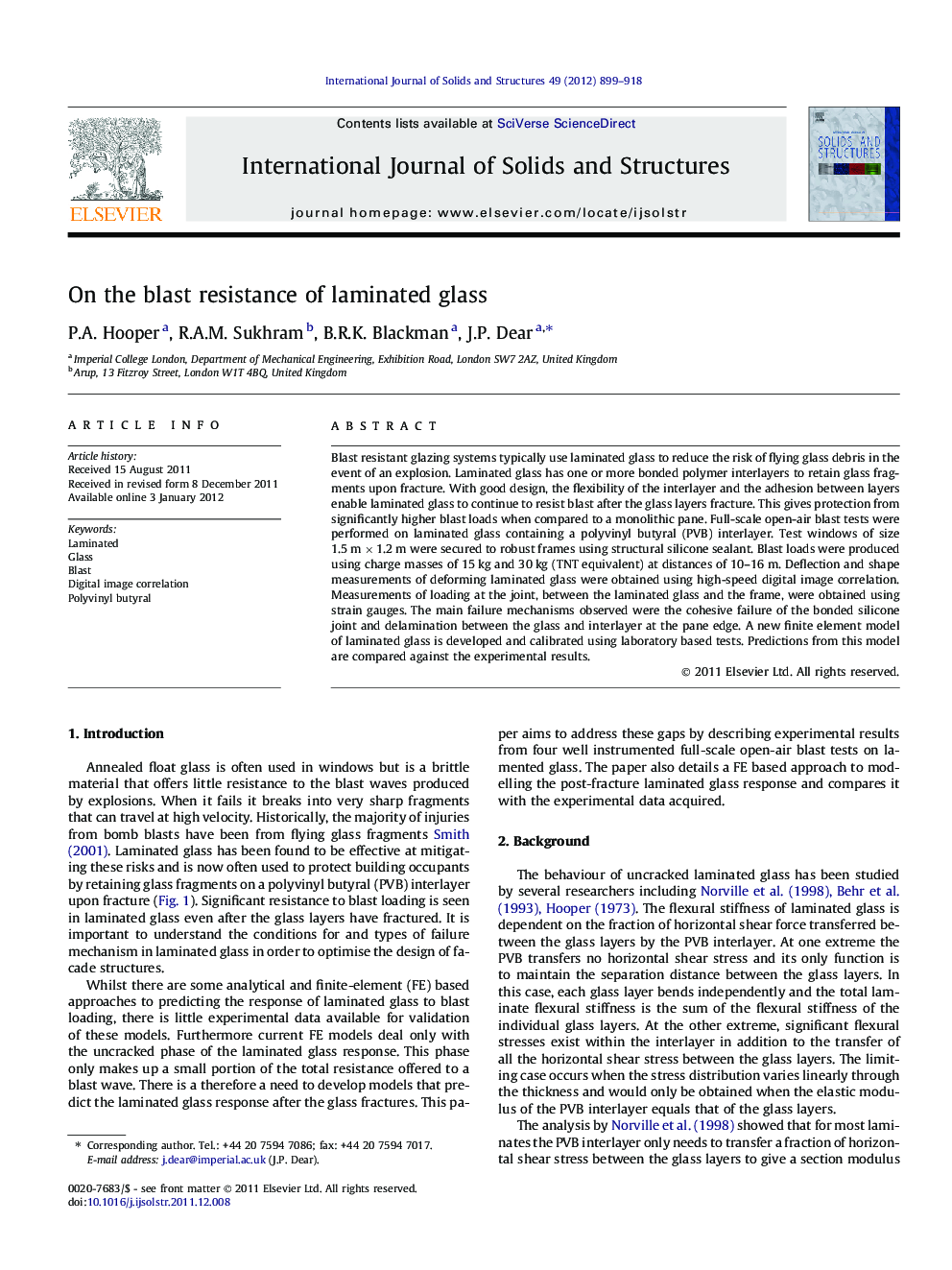| Article ID | Journal | Published Year | Pages | File Type |
|---|---|---|---|---|
| 278316 | International Journal of Solids and Structures | 2012 | 20 Pages |
Blast resistant glazing systems typically use laminated glass to reduce the risk of flying glass debris in the event of an explosion. Laminated glass has one or more bonded polymer interlayers to retain glass fragments upon fracture. With good design, the flexibility of the interlayer and the adhesion between layers enable laminated glass to continue to resist blast after the glass layers fracture. This gives protection from significantly higher blast loads when compared to a monolithic pane. Full-scale open-air blast tests were performed on laminated glass containing a polyvinyl butyral (PVB) interlayer. Test windows of size 1.5 m × 1.2 m were secured to robust frames using structural silicone sealant. Blast loads were produced using charge masses of 15 kg and 30 kg (TNT equivalent) at distances of 10–16 m. Deflection and shape measurements of deforming laminated glass were obtained using high-speed digital image correlation. Measurements of loading at the joint, between the laminated glass and the frame, were obtained using strain gauges. The main failure mechanisms observed were the cohesive failure of the bonded silicone joint and delamination between the glass and interlayer at the pane edge. A new finite element model of laminated glass is developed and calibrated using laboratory based tests. Predictions from this model are compared against the experimental results.
